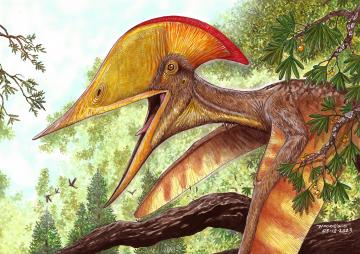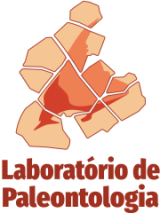New pterosaur from China celebrates international collaboration

A newly identified species of toothless pterosaur (ancient flying reptile) from China, named to celebrate international collaboration between Chinese and Brazilian researchers, is described in a paper in Scientific Reports. The species, dubbed Meilifeilong youhao and based on two specimens, provides insights into a group of medium-sized and high-crested China pterosaurs called chaoyangopterids.
The authors describe the fossilized remains of two Meilifeilong youhao specimens, one of which is among the most highly preserved and complete examples of the chaoyangopterid group of pterosaurs and is only missing its tail. In contrast, the second specimen consists only of some skull bones. According to the authors, the word ‘meilifeilong’ meaning ‘beautiful flying dragon’ was chosen to reference the high level of preservation of the more complete skeleton. Meanwhile ‘youhao’, meaning ‘friendship’ in Mandarin, was chosen to celebrate the twenty-year long continuous collaboration between Chinese and Brazilian palaeontologists in pterosaur research.
The authors suggest that the more complete skeleton was transported intact to a body of water and gradually buried in the sediment at the bottom. The individual has a maximum wingspan of around 2.16 metres, and characteristics such as toothless jaws, and low, backward-facing crests in front of its eye sockets. The crests are more developed in the more complete specimen, suggesting that they may grow with age or vary between sexes, although further evidence is needed to confirm that.
Based on common characteristics, the authors deduce that M. youhao belongs to a group of pterosaurs called Chaoyangopteridae, which were found during the Cretaceous Period (145 to 66 million years ago) in China. The completeness of the primary specimen may help to provide further insights into that particular group of pterosaurs, conclude the authors.
Wang et al. A new toothless pterosaur from the Early Cretaceous Jehol Biota with comments on the Chaoyangopteridae. Scientific Reports 13: 22642. https://www.nature.com/articles/s41598-023-48076-7

